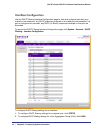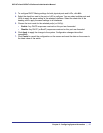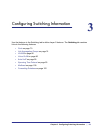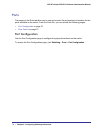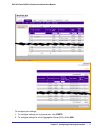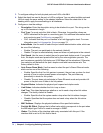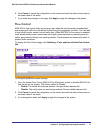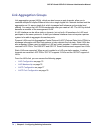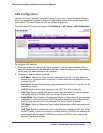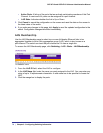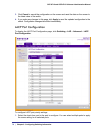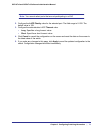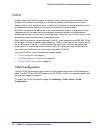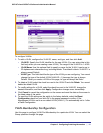
74 | Chapter 3: Configuring Switching Information
GS716Tv2 and GS724Tv3 Software Administration Manual
Link Aggregation Groups
Link aggregation groups (LAGs), which are also known as port-channels, allow you to
combine multiple full-duplex Ethernet links into a single logical link. Network devices treat the
aggregation as if it were a single link, which increases fault tolerance and provides load
sharing. You assign the LAG VLAN membership after you create a LAG. The LAG by default
becomes a member of the management VLAN.
A LAG interface can be either static or dynamic, but not both. All members of a LAG must
participate in the same protocols. A static port-channel interface does not require a partner
system to be able to aggregate its member ports.
Dynamic LAGs use Link Aggregation Control Protocol (LACP) Protocol Data Units (PDUs) to
exchange information with their link partners to help maintain the link state. Static LAGs are
also supported. When a port is added to a LAG as a static member, it neither transmits nor
receives LACP PDUs. The GS510TP and GS110T Smart Switches each support four LAGs.
Static LAGs are supported. When a port is added to a LAG as a static member, it neither
transmits nor receives LACP PDUs. GS716T supports 2 LAGs and the GS724T supports 4
LAGs.
From the LAGs link, you can access the following pages:
• LAG Configuration on page 75
• LAG Membership on page 76
• LACP Configuration on page 77
• LACP Port Configuration on page 78



